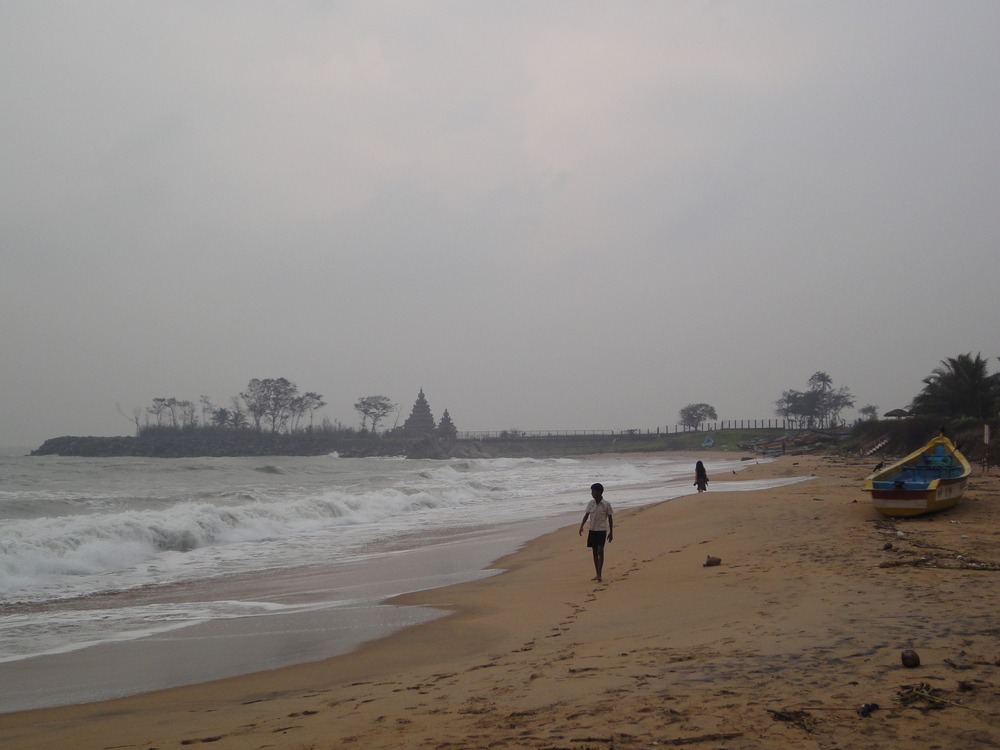Wandering through the streets of Mamallapuram we
find shops selling clothing and lanterns. Mandalas, etched in colourful pastel chalks,
greet customers at the doorstep of many of these stores but the salty breeze
beckons us further to Mamallapuram’s sandy beach. Men are casually sprawled
along the curb, playing slow rounds of cards in the mid-morning humidity.
At the end of the street, fishing boats are moored on the sand until their next fishing trip out to sea.
The waves roll in, turbulent tunnels crashing onto the shore. The sky is hazy
and clouds brood, contemplating a downpour that would dampen fishermen as they
unravel their confused bundles of fishing nets. What is also brooding away, in
the distance, is Shore Temple – one of the oldest temples in southern India.

Shore Temple, a Hindu monument dedicated to
Vishnu and Shiva, was built during Pallava King Rajasimha’s reign between 700
and 728AD. Now, it sits lonely on an outer rocky point overlooking the Bay of
Bengal. Shore Temple’s granite walls, discoloured by erosion, whisper a sense
of longing.
According to Hindu legend, Shore Temple is one
of six more sibling temples, or Seven Pagodas. It was also said that the gods were
so jealous of the Seven Pagodas’ elegance that they decided to flood the area.
The rest of these temples apparently lay hidden beneath the waters. In 2004,
evidence emerged to support the legend of the Seven Pagodas.

A tsunami hit this coastline and devastated parts
of Mamallapuram in 2004. Locals insist that the angry ocean barged into the
restaurants and shops that hug the beach then receded two kilometres out from the
shore. These businesses were never built for the strength of such a natural
disaster and so they were reduced to splinters. Once the ocean receded, fish
and crustaceans lay strewn across the ocean floor and it’s alleged that fishermen
rushed out to collect this exposed bounty. What also lay exposed were remnants
of ancient elephant and lion sculptures like the ones to be found standing near
Shore Temple, suggesting that more submerged temples lay somewhere in the
vicinity.

Apparently, the tsunami reached the height of Shore
Temple yet its granite foundations provided the stability necessary for this temple
to survive this natural disaster. And it remains in situ on its own; a survivor
that now guards the shore from impending danger. Shore Temple is also a stark
reminder of what happened in 2004 and what could happen at any time.

